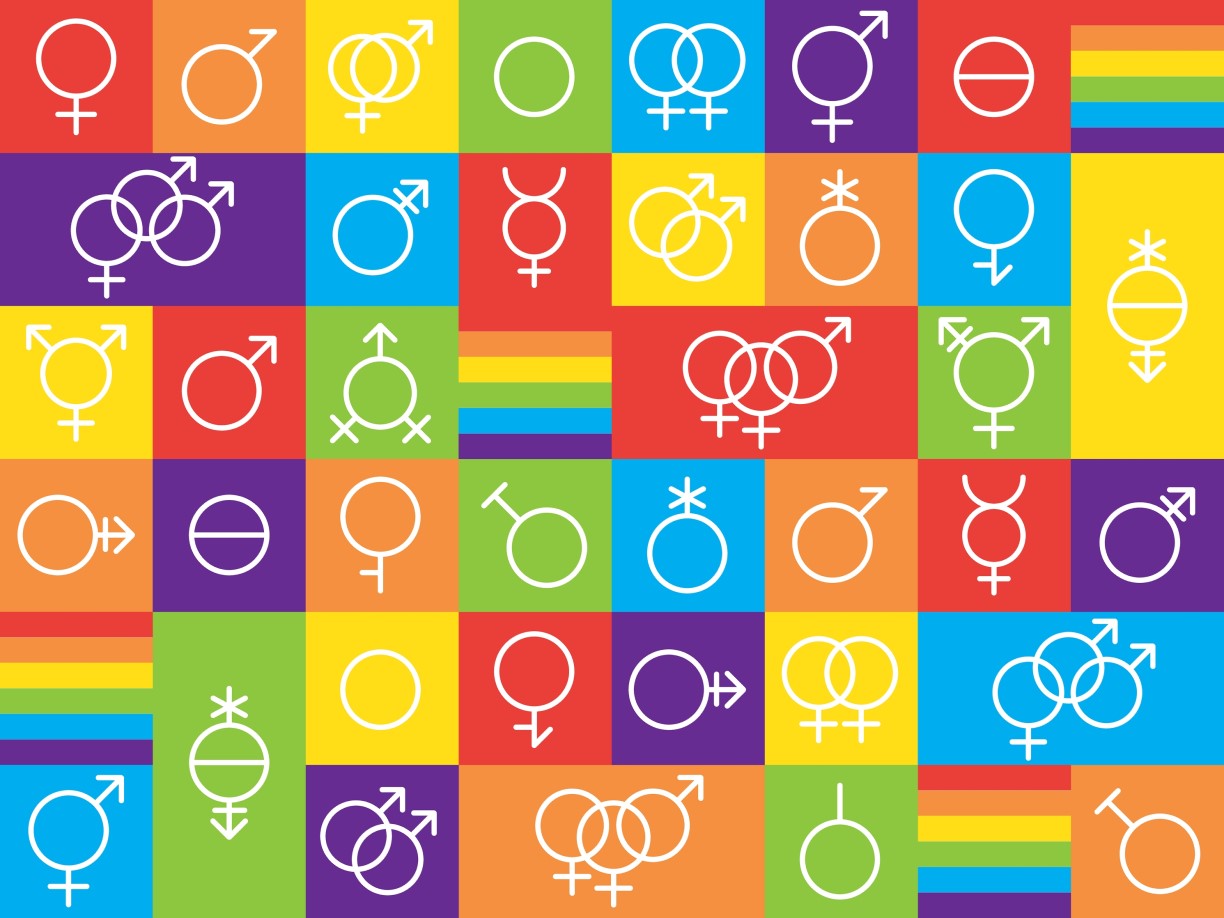Beyond Binary

Nonbinary. Genderfluid. Genderqueer.
The terms are relatively new, but the reality they describe — individuals whose gender identities are neither strictly male nor female — has been celebrated for centuries. Hindu texts dating back to 400 B.C. are among the earliest to acknowledge a tritiya prakiti, or “third gender,” while Polynesian, Indigenous North American and Mesoamerican cultures have their own terms and traditions honoring gender-transcendent or “two-spirit” people.

This rich history of gender nonconformity has largely been eclipsed by Western culture’s insistence on a male/female dichotomy. Today, however, more people than ever before are embracing the gray area between these black-and-white gender distinctions. According to UCLA School of Law’s Williams Institute, 1.2 million Americans — the majority of whom are white and under 30 — identify as nonbinary. And U.S. citizens in 21 states and Washington, D.C., can now choose nonbinary identity markers for driver’s licenses, identification cards and other legal documents.
Yet, while laws can change overnight, cultural norms don’t: In a recent Pew Research Center survey, nearly half of respondents reported being “very or somewhat uncomfortable” using gender-neutral pronouns such as “they/them,” even if asked to do so. However, according to Wiley Davi, professor of English and Media Studies, acknowledging that “we each choose, discover and/or determine our own gender identity” is an essential step in creating more equitable and inclusive work environments.
THE IMPORTANCE OF INTROSPECTION
In a chapter for the recently published book Exploring Gender at Work, Davi and research partner Duncan Spelman, professor emeritus of Management, offer additional insights about how to work more effectively with nonbinary colleagues.
It’s a topic that resonates both personally and professionally for each. Davi, who was assigned female at birth but identifies as genderqueer, is informed by their lived experience, while Spelman, who identifies as male and cisgender, has devoted more than 40 years to learning and teaching about diversity and organizational behavior. After meeting in 2002 at a Bentley-sponsored diversity retreat, the pair began collaborating on coursework and research projects, developing a deep friendship.

Davi, who has frequently faced discrimination in response to their gender nonconformity, credits Spelman with helping them process these often-harrowing experiences. “Sharing my stories with Duncan has allowed me to step back and assess my own behavior,” Davi explains. “It’s taken me years, but now I can respond to these situations with grace.”
The pair advocate a similarly introspective approach in the workplace. Spelman notes that most resources dedicated to supporting marginalized individuals advocate understanding and empathizing with their unique needs and experiences. In his view, however, it’s far more effective to focus internally. “Understanding yourself is an essential first step to being a good coworker.”
Self-reflection as an avenue to personal and professional fulfillment is the guiding principle in Davi and Spelman’s 2020 book, Leading with Uncommon Sense. As Davi explains, “Stepping back to reflect — and question yourself around complex issues — can point the way to better decision-making for people, organizations and societies.”
Their process, characterized as “paying attention with a purpose,” begins with a pause — taking a deep breath, going for a walk, or any other action that helps set the stage for introspection. Then, as you reflect upon a particular situation or experience, they offer the following guidelines:
Be Humble.
Research indicates human behavior is driven largely by the unconscious mind — tying our shoes, for example, is an automatic and conditioned response. So, too, is gender attribution. “The gender binary is so deeply internalized in most of us,” says Spelman, that we automatically and immediately categorize people we meet as male or female. “Being humble means asking ourselves ‘What is outside my awareness?’ and acknowledging the unconscious forces that may be influencing our conscious thoughts, words and actions.”
Be Emotional.
In the business world, emotions are often seen as obstacles to productivity. But Davi and Spelman say focusing on our feelings is essential for achieving personal and professional growth. “Our emotions provide us with valuable information, but we often fail to pay attention to them,” Davi notes. “Acknowledging our feelings helps us make sense of our experiences and determine how to act and what to believe.”
Be “Impolite.”
“Many of us were taught it’s not polite to mention someone’s race, religion or other identities,” Spelman explains. “This approach advocates not seeing differences for fear that this awareness could lead to discrimination.” But he and Davi believe ignoring social identity differences — and our feelings about them — is “an unwise approach” to dealing with coworkers. Instead, we need to pay attention to how our (and others’) social identities intersect and recognize how the effects of these identities influence our perceptions, thoughts and actions.
Be Uncertain.
Humans are hardwired to seek certainty, Davi says. “Our brains want predictability and, therefore, see patterns and clarity even if they don’t exist.” Gender nonconformity challenges this instinct, generating anxiety when we’re unable to “figure out” if someone is male or female. “If you’re unsure of a colleague’s gender,” Davi counsels, “sit with the feeling of uneasiness. Identify and resist the impulse toward certainty; instead, embrace ambiguity and welcome complexity.”
Despite these helpful reminders, Davi and Spelman know that introspection isn’t easy — especially when it requires us to confront unconscious biases. “The work of diversity and inclusion is messy,” Davi acknowledges. “As an ally, you may get it ‘wrong;’ as someone who identifies as genderqueer, you may get it ‘wrong.’ But one of the benefits of doing this kind of work within a community such as a workplace is that you often get opportunities to go back and try again.”
“Taking action means taking risks and requires courage,” adds Spelman. “Some failure is inevitable. But more productive relationships with your nonbinary colleagues depend upon you taking the plunge.”
Talking Terminology
While the definitions below provide a starting point, Davi cautions that “it’s important to keep in mind that terms like these are personal and individual. Whenever possible, engage in dialogue with colleagues to avoid assuming people are using terms the same way you are.”
- SEX — Biological differences between males and females, such as sex chromosomes and sexual organs
- GENDER — An individual’s social identity, as expressed through physical appearance, mannerisms, behavior and other observable, external attributes
- TRANSGENDER— An umbrella term for people whose gender identity differs from the sex they were assigned at birth
- NONBINARY — Individuals whose gender identity is neither strictly male or female
- CISGENDER — Individuals whose gender identity aligns with the sex they were assigned at birth

